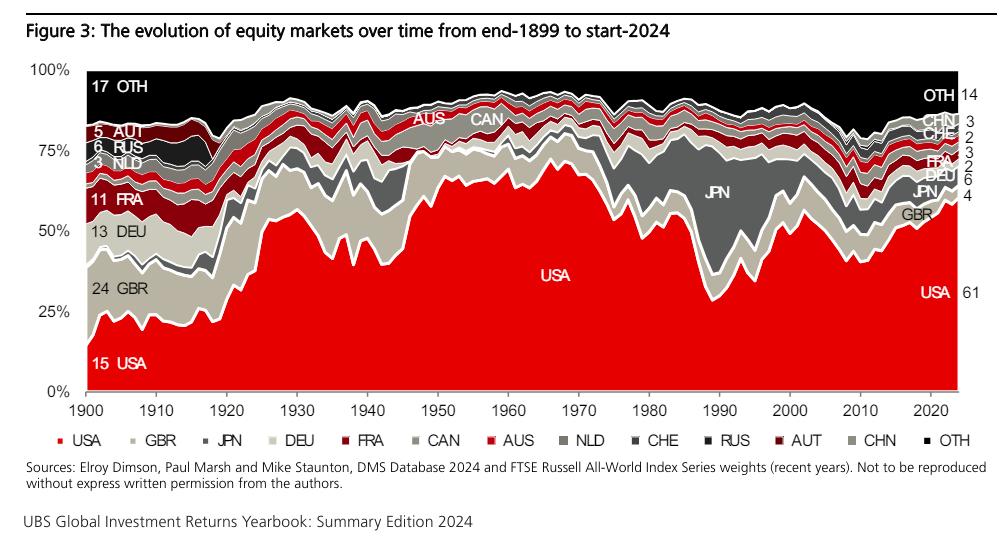I have a bit of a thing for data – I believe that you can bumble through your existence in the main according to the available data. It doesn’t matter whether you are deciding between two medical treatments or two new fridges. Data is helpful – correct data is compulsory. This is particularly true when being able to eat depends upon receiving the correct information and then acting upon that information. Sadly broking/investment banking/fund management is full of lazy data.
Consider the chart below from the UBS Global Investment Returns Yearbook 2024 which you can download here.

In looking at this chart you can make a few statements that UBS does about the relative changes in the size of markets over time. The brief dominance of Japan before it all ended in tears for them and the US reasserted itself. Even the end of colonialism and the empire as British and French stockmarkets underwent a relative contraction early in the 20th century is demonstrated in the chart. You could even try to make some sort of judgment as to the extraordinarily poor performance of the overall Australian economy and its inability as presented by the relative size of its exchange to increase its footprint over 100 years.
Except that you can’t because the data to make such a judgment doesn’t exist.
Australia as we know it did not come into existence until January 1st 1901 – there was no Australian stock exchange in 1900.
In the 1880’s each colony had its own exchange – even Launceston had an exchange but I have no idea what they would do all day. It wasn’t until 1937 that what was called the Australian Associated Exchanges was established. Even then the states maintained their independent exchanges. Amalgamation of the exchanges didn’t occur until 1987 when the ASX was formed.
More importantly, the first share price index was not published until 1938 so quoting figures back to 1900 is nonsense, and doing so without checking is intellectually lazy.
Is it any wonder people who invest with brokers fund managers don’t get very far.





